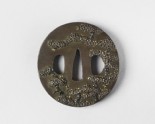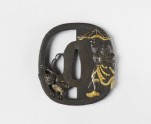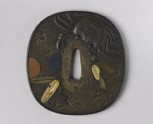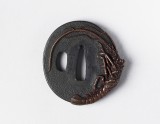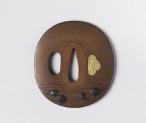Room 36 | Japan from 1850 gallery
Explore the major technical and creative developments in arts and crafts of Japan after 1850 and visit the Ashmolean's tea house.
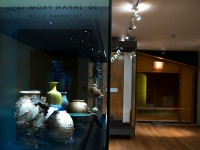
In the late 1800s, many Westerners became fascinated by the products of Japan, a country that had been closed for over 200 years. The craze for Japanese art and culture became known as 'Japonisme', and had an enormous influence on Western art.
This enthusiasm was shared by the collector Sir Herbert Ingram and his wife, Lady Ingram. In 1908, they visited Japan on their honeymoon and spent three months sightseeing and visiting curio shops.
In 1956, the Ingrams generously donated hundreds of Japanese artworks to the Ashmolean. At the same time they gave a superb collection of early Chinese art, which can be seen on display in the Early China Gallery.
 Blue Bizen ware figure of a phoenix (EA1956.1991)
Blue Bizen ware figure of a phoenix (EA1956.1991)
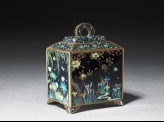 Casket with flowers and butterflies (EA1956.4001)
Casket with flowers and butterflies (EA1956.4001)
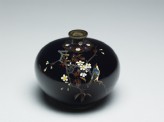 Bottle with a bird on a flowering branch (EA1956.4000)
Bottle with a bird on a flowering branch (EA1956.4000)
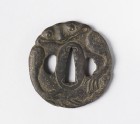 Tsuba in the form of a frog (EA1956.2093)
Tsuba in the form of a frog (EA1956.2093)
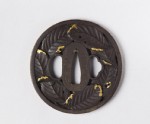 Tsuba with persimmon leaves (EA1956.2140)
Tsuba with persimmon leaves (EA1956.2140)
 Baluster vase with flattened shoulders (EA1956.682)
Baluster vase with flattened shoulders (EA1956.682)
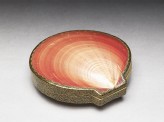 Kōgō, or incense box, made from a Venus shell (EA1956.1801)
Kōgō, or incense box, made from a Venus shell (EA1956.1801)
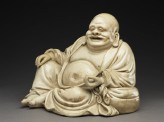 Satsuma figure of Hotei (EA1956.3995)
Satsuma figure of Hotei (EA1956.3995)
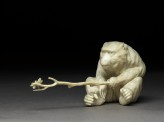 Okimono, or ornament, in the form of a monkey holding a branch (EA1956.3998)
Okimono, or ornament, in the form of a monkey holding a branch (EA1956.3998)
 Sake cup with a scroll depicting a crane (EA1956.1809)
Sake cup with a scroll depicting a crane (EA1956.1809)
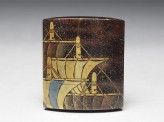 Inrō with gold and silver sails (EA1956.1768)
Inrō with gold and silver sails (EA1956.1768)
 Inrō with chickens and begonias (EA1956.1743)
Inrō with chickens and begonias (EA1956.1743)
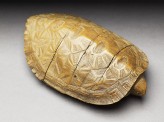 Inrō in the form of a turtle (EA1956.3295)
Inrō in the form of a turtle (EA1956.3295)
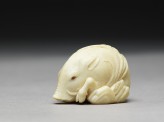 Netsuke in the form of a wild boar among grass (EA1956.3208)
Netsuke in the form of a wild boar among grass (EA1956.3208)
 Netsuke in the form of a monkey holding a crab (EA1956.1733)
Netsuke in the form of a monkey holding a crab (EA1956.1733)
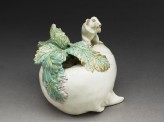 Satsuma box in the form of a rat sitting on a turnip (EA1956.695)
Satsuma box in the form of a rat sitting on a turnip (EA1956.695)
 Kōgō, or incense box, in the form of a hare (EA1956.1794)
Kōgō, or incense box, in the form of a hare (EA1956.1794)
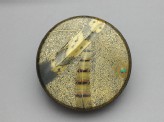 Kōgō, or incense box, with feathers (EA1956.1803)
Kōgō, or incense box, with feathers (EA1956.1803)
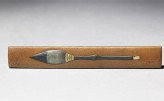 Kozuka, or knife handle, with calligraphy brush (EA1956.2917)
Kozuka, or knife handle, with calligraphy brush (EA1956.2917)
 Kozuka, or knife handle, with crayfish (EA1956.3004)
Kozuka, or knife handle, with crayfish (EA1956.3004)
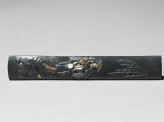 Kozuka, or knife handle, with an oni carrying the Wisteria Maiden (EA1956.2906)
Kozuka, or knife handle, with an oni carrying the Wisteria Maiden (EA1956.2906)
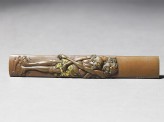 Kozuka, or knife handle, depicting Ashinaga and Tenaga (EA1956.2912)
Kozuka, or knife handle, depicting Ashinaga and Tenaga (EA1956.2912)
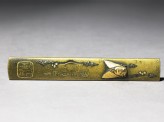 Kozuka, or knife handle, with a cicada (EA1956.2913)
Kozuka, or knife handle, with a cicada (EA1956.2913)
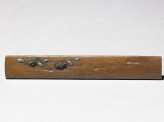 Kozuka, or knife handle, with ants (EA1956.2957)
Kozuka, or knife handle, with ants (EA1956.2957)
See also
Notice
Objects may have since been removed or replaced from a gallery. Click into an individual object record to confirm whether or not an object is currently on display. Our object location data is usually updated on a monthly basis, so contact the Jameel Study Centre if you are planning to visit the museum to see a particular Eastern Art object.
© 2013 University of Oxford - Ashmolean Museum

